Bosnian (Balkan) baklava is the midcentury modern of baklavas; its value is its simplicity. Baklava at its core is a strong sweet meal. Done well, one to two pieces will satiate you in one sitting, kind of like the area coffee.
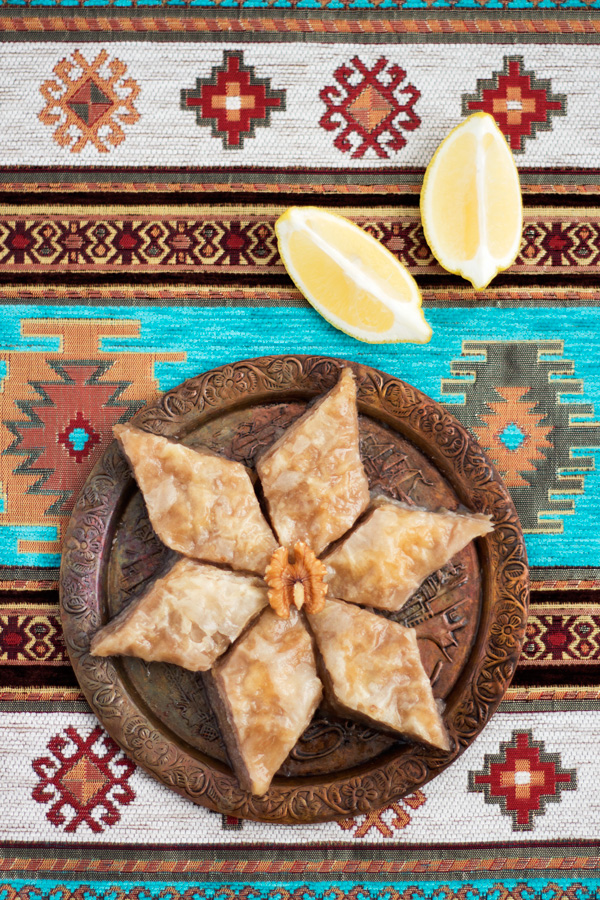
For a dessert with such cult following it’s surprising how many people shy away from making it. It seems incredibly complicated. The layers. The filling... But after you break it down it all comes to walnuts, the dough, and agda.
First we tackle the pronunciation. “Ba-kla-vaaaaah” is wrong. “Ba-klava” is right. Think two syllables, without the long “aaaaah” at the end. Short and sweet. Just like baklava.
Now the walnuts. If you’re so lucky to have a walnut tree, wonderful. Grab a pound and start chopping. If not, store bought walnuts will do beautifully. See if you can find pre-chopped ones to cut down on preparation time. (And remember to take out your coffee grinder.)
While at the store, pick up some phyllo dough that comes in long sheets. I use the Safeway Select phyllo dough sheets, (13x17 inches long, 18 per package). No affiliation - they’re just what my store carries. Feel free to use whichever ones you can find. Phyllo sheets are located in the freezer section. Most people at the store won’t know what you’re looking for, so just search the freezer isles until you find it.
Look for phyllo dough sheets that will fit (or be a little bigger than) the pan in which you’ll be preparing (and then baking) baklava. (I've used a round pan here, but you are more than welcome to use a rectangular one.) You may have to cut some dough off as you're layering it to ensure it fits perfectly into your pan. You’ll need two boxes of phyllo, or about 36 sheets. I highly recommend you get into a habit of buying an extra box. Sheets rip and/ or get stuck together sometimes. Since your entire operation depends on phyllo separating nicely it’s good to have more on hand, just in case. You can always reseal and stick back in the freezer what you don't use up.
Now we come to the third important component of baklava, called agda (“agh-dah” or šerbe, “sher-beh”). Agda is simple syrup made by combining sugar and water over heat. You’ll find that many Balkan desserts are syrup based, so baklava is a great starting point to learn the magic of agda. It’s not complicated at all. Just remember to use the same amount of sugar and water. For a sweeter agda you can use a little less water. However when you're just starting out making baklava, it's best to use 1:1 ratio until you gain more experience. After the mixture comes to a boil, you’ll let it boil for 5 minutes over medium heat.
Another thing about agda to keep in mind is its temperature. Some desserts will require both the agda and dough to be hot during the combining process, while others will require that one is hot and the other cold. Baklava falls into the hot-cold category. Agda will be cold and baklava hot during the combining step. Granted, you won't mess up anything if agda is still a little bit warm. Some very experienced cooks have taught me this.
It's hard to determine how many servings this recipe yields because you don't know how many baklavas people will eat. It also depends on how you cut the baklava, and the size/ shape of the pan. My pan yields about 80-85 baklavas. If everyone eats 2, then I have about 40 servings. Yours will vary.
Things to keep in mind... Always, ALWAYS, always cut baklava before baking. Also, use best judgement when combining agda and baklava. You want to pour agda over baklava, but not to overdo it. Baklava should be extremely well moist, yet not "swimming" in the syrup. It's a balance you'll get a feel for with practice, but try to pay attention to it from your first baklava on. In short, if you've poured most of the agda over baklava, and it looks completely, thoroughly wet, you can stop right there. If you feel you should keep going, then keep going. Whatever you do, you can't make a huge mistake. Baklava will still be yummy, just make notes for the next time regarding your syrup preference.
With this recipe's phyllo dough measurements you'll have 1 (bottom) layer of 6 phyllo sheets, 9 layers of 2 sheets each on top of the bottom layer in between each is a nut mixture, and the top layer consisting of 3 sheets. This means you'll need to divide your nut mixture into ten parts. Instead of measuring 2.1 ounce each time, just grab a generous handful.
I think you’re ready. Yes? Let’s do it. (And for a recipe similar to baklava, check out roses, or how I like to call this dessert, baklava's pretty cousin.)
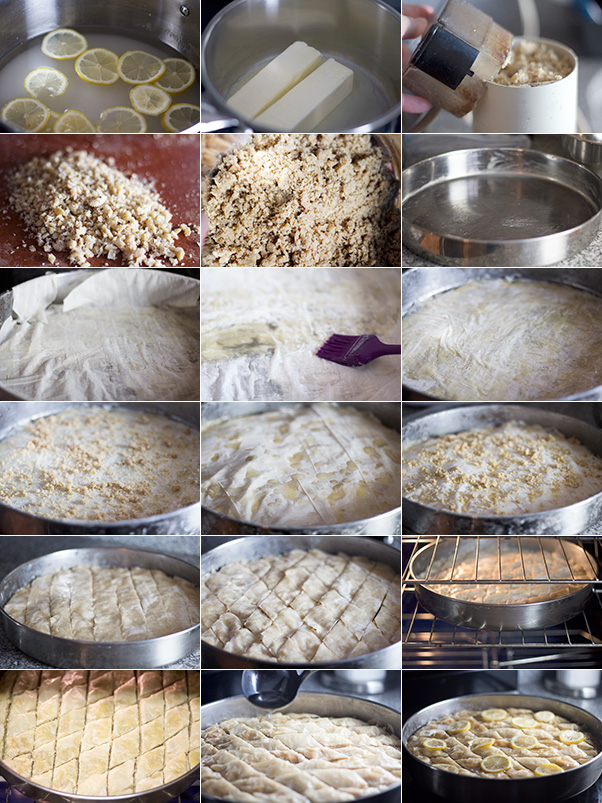
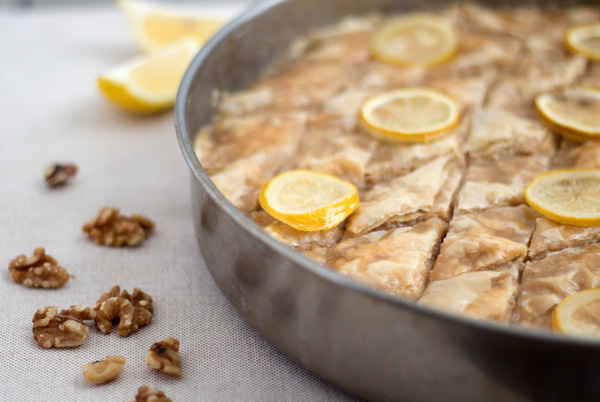
BAKLAVA RECIPES AROUND THE WEB
As elaborated, Balkan baklava is made with simple syrup. And good simple syrup requires practice. Baklava consists of a delicate phyllo-syrup balance. One overpowers the other and you've got a problem on your hands. You'll recognize a good baklava because you'll see each layer with nuts in between, while top layers will stay crisp and separate.
Perhaps you got the syrup technique down. Or you can even switch between honey and syrup baklava recipes with your eyes closed. Maybe your challenge comes down to volume. There is only a couple of you, and a huge batch of baklava.
Fret no more! I found another recipe for you. This one is by Hilah (how beautiful is her name?) over at hilahcooking. Her baklava is a successful combination of simple syrup and honey over phyllo. Hilah bakes a smaller batch of baklava - perfect if you're taunted by the idea of baklava leftovers.
A couple of things even I learned? Add an orange rind (instead of lemon) into syrup. And to remind you to make sure your nuts aren't salted, whichever ones you're using. (I'm rooting for walnuts, of course!)
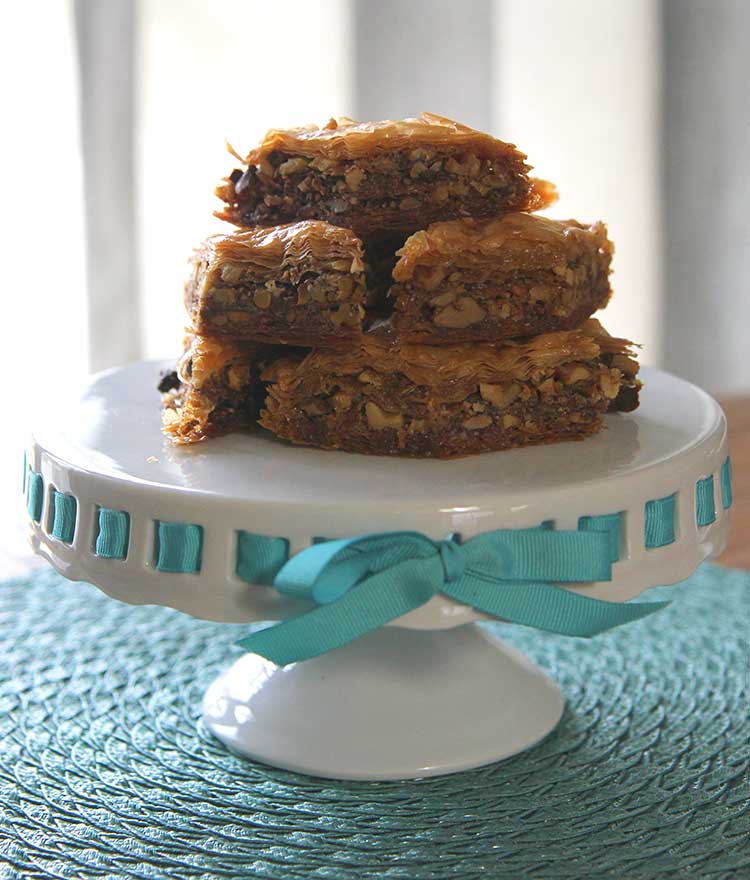
Let me hammer this in more. Baklava is a rich dessert. A heavy, hearty dessert. When you want baklava nothing else will do.
But what about those other times? (Times when you just want a bite or two of baklava without having to make it from scratch, or feeling like you ate the heartiest dessert in the world.)
Mandy over at mandyrecipeboxblog has made something I've never heard of before. Something genius. Something that made me say over again "why didn't I think of this?!
Ladies and gents, check out her baklava cookies!
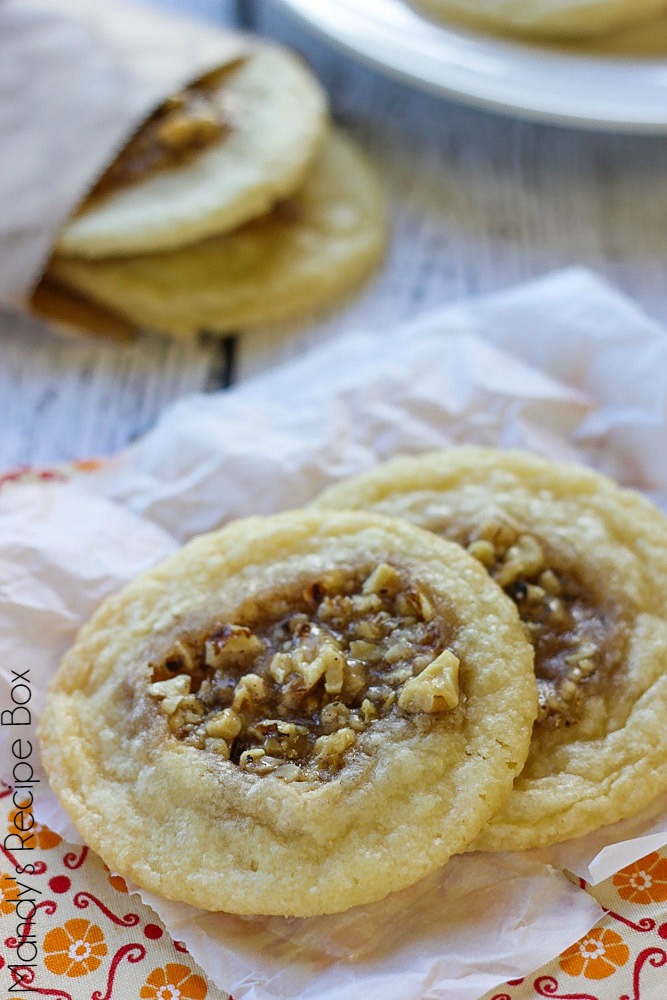
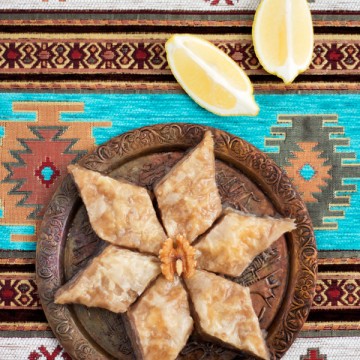
Balkan (Bosnian) Baklava Recipe
Ingredients
Simple Syrup (Agda)
- 5 cups granulated sugar
- 3.3 cups tap or bottled water
- 1 teaspoon vanilla or ½ tablespoon liquid
- 1 lemon large, deseeded, cut into rounds
Phyllo (Jufka)
- 2 boxes phyllo dough about 30 sheets store-bought, or 1kg (2 pounds), homemade, each sheet should be slightly larger in size than your pan when unrolled
- 1 .25 cup melted butter
- 3.5 tablespoons oil
Filling (Nadjev)
- 9 cups mixed ground walnuts half coarse and half fine; as fresh as possible
- 1.5 cups granulated sugar
Instructions
- Make the Simple Syrup (Agda). In a medium pot, mix water, sugar, and vanilla. Turn the heat to high and bring it to a boil. Once boiling, lower the heat to medium. Add lemon slices and cook for 5–7 more minutes. Remove from heat and let it cool.Do the next steps while the syrup is cooking.
- Make the Walnut Filling. Blend half the walnuts until flour consistency. Put them in a large bowl. Chop the rest of the walnuts into small pieces (use a food processor, blender, or knife), then add them to the bowl. Add sugar and mix everything well.
- Melt the Butter. In a small pot, melt the butter on low heat. When fully melted, add oil and whisk until smooth.
- Cut the Phyllo to Fit the Pan. Unroll half of the phyllo sheets on your work surface. Place your baking pan on top of them. Cut around the pan so the phyllo fits its shape (use a knife or pizza cutter). Discard the extra pieces. Repeat with the other half of the phyllo sheets. Set aside 3–4 sheets for the final top layer. Cover those with plastic wrap or a towel so they don’t dry out. Preheat the oven to 300°F (150°C).
- Make the Bottom Layer. Brush the baking pan with butter. Add one sheet of phyllo to the bottom, then brush it with butter. Repeat this until you’ve layered six phyllo sheets, brushing butter between each one.
- Layer the Baklava. Take a large handful of filling (about 1/11 of it) and spread it evenly over the phyllo using your hand. Add two phyllo sheets on top, brushing each with butter. Repeat this process—filling, then two buttered phyllo sheets—until all the filling is used. Finish with the 3–4 top sheets you set aside, brushing each with butter.You’ll end up with about 10 layers of filling in between the bottom and top layers.
- Cut the Baklava. Use a sharp knife to cut the baklava into long vertical strips, about 1.5 inches (4 cm) wide. Then rotate the pan 45 degrees and cut vertical strips again from this side to form diamond shapes. A ruler helps keep the cuts even.
- Bake the Baklava. Place the pan on the middle oven rack. Bake for 15 minutes, or until the top turns golden. Lower the heat to 265°F (130°C) and continue baking for 90–120 minutes. Check on it occasionally. It’s done when the baklava slightly 'moves' (shifts) in the pan when you gently shake it side to side. It should be a nice golden brown. You can also gently lift one piece with a fork to check if the bottom is baked.
- Soak with Syrup. Take the pan out of the oven and let it cool for 10 minutes. Use a ladle to slowly pour the cooled syrup over the baklava. Start from the edges and move toward the center. Pour half first, wait a minute for it to soak in, then pour the rest. Place lemon slices evenly on top. If you have a flat, slightly heavy object larger than the pan (like a serving tray), place it on top for 10–15 minutes. Then remove it and cover the pan with a kitchen towel.
- Let It Rest. Leave the baklava in a cool room (but not the fridge) for several hours, or overnight, so it can fully absorb the syrup.
Video
Notes
- Nutritional and Serving Information

The Blonde Chef says
I have always wanted to learn how to make baklava and I am so excited to see your recipe! I will definitely be trying this ASAP!
aida says
I can't wait to hear how it turns out, keep me updated!
Mira says
It looks delicious and pictures are beautiful! I make baklava, using a similar recipe! It is time to make some around the holidays! Thanks for sharing!
aida says
Nice! And thanks for the tip on Italian stores for lady fingers - I'll definitely check it out.
Stacey @ Bake.Eat.Repeat. says
Baklava is one of those things that I always think is so fancy there's no way I could make it! You made it look do-able here, so I may have to actually try this!
aida says
Stacey - welcome! I bet you could do it, and do it really well - from your blog it's evident you have a great grasp on desserts. The trick is really to take notes during the process and compare it the next time you make it. Even the first baklava looks and tastes very good - but it's the fourth, fifth one you make that will blow your mind.
Bunny says
Hi Naida, I'm new to your site. I've made Baklava many times, but the best one I've tasted was made with Rose Water, and was not super sweet. Do you have a recipe for this? Thanks.
Aida says
Hi Bunny, welcome!
I don't. I prefer the classic version of baklava, but yours with rose water does sound tasty. If you find the recipe do come back and share.
Regards
Lili says
I love baklava but never did it myself. Thanks for your recipe I will finally give it a try.